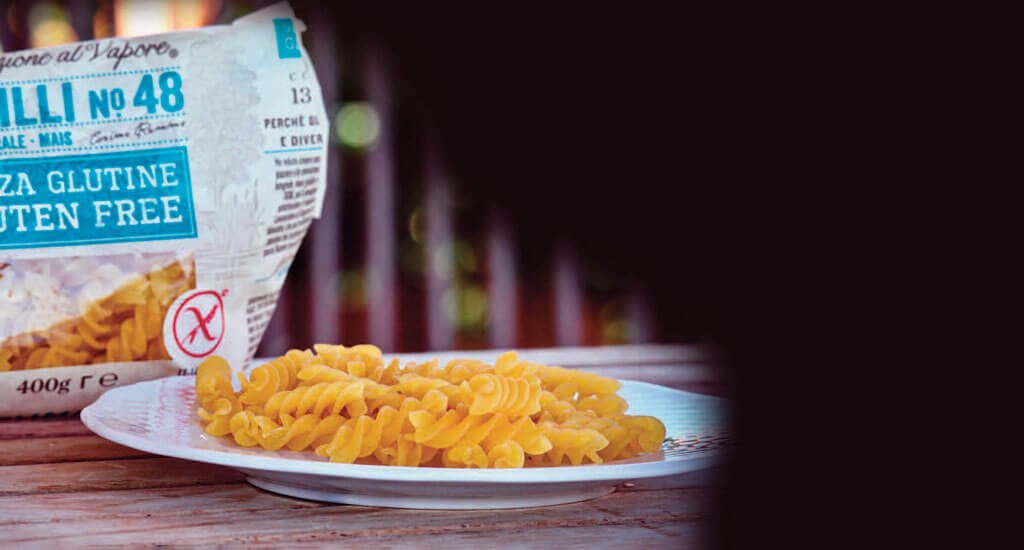
Understanding what ceoliac disease and gluten intolerance is
I think it is about time I wrote an article on Gluten. I really think that people don’t understand or have very limited knowledge of this subject and symptoms, and now this is part of global society I want to set the record straight by giving the full picture to all readers.
When I started cooking in New Zealand over 25 years ago, vegetarians with the occasional vegan used to be the different diner requirements. Since moving to Ireland in 1999, times have changed with the focus of coeliac diners and shoppers growing, with food allergy conscious menus, including desserts, gluten-free beers and savoury snacks, not to mention the healthy eating policy that is found more in the Irish household these days.
Without the knowledge of what Coeliac Disease and Gluten Intolerance is and not being prepared for this within hospitality, or buying food products off the shelf the effects can be dangerous to the gluten-free consumer if not catered for. There has been evidence of customers in restaurants needing medical attention, not to mention the amount of national food product recalls due to not declaring ingredients on the back of the packet which leads to eating establishments being under scrutiny for endangering people’s lives, which has forced establishments to close.
What is gluten?
Gluten is a type of protein found in cereals, grain & breads. It is contained in food processed from wheat, barley, rye, spelt, and kamut. Gluten helps bread to rise giving it a chewy texture. Not all foods from the grain family contain gluten. Some examples of non-gluten grains include: regular wild rice, buckwheat, corn, millet, oats, quinoa etc.
In times gone by, you would have heard that someone is on a gluten-free diet, but please do not get confused as this does not mean they are on a weight loss programme or are instructed to work out at a gym. The gluten-free diet is completely free from these gluten grains. Unfortunately, gluten shows up unexpectedly in many processed foods that contain food additives, flavourings, stabilizers or thickening agents.
Coeliac disease
It’s a condition that causes many digestive symptoms due to difficulty in digestion of gluten. Those with celiac disease must avoid gluten-containing foods 100% of the time. Certain foods such as oats that do not contain gluten should be used carefully due to cross-contamination that can occur while growing in fields near wheat or during processing on the same machines.
Wheat or Gluten Sensitivity
Certain individuals who do not have the Coeliac disease have been found to be sensitive to wheat or to all gluten-containing food. Often this is a result of eating wheat or gluten foods many times daily, every day, for many years. Sensitivities develop that only will improve with the removal of wheat or gluten for a period of time. Often wheat can be reintroduced into the diet, as long as it is eaten infrequently (an ounce every 4-7 days). Others find that symptoms return any time they eat wheat.
There are 2 types of reactions
Food allergy reaction:
The reaction occurs almost immediately, quite violent, swollen lips or tongue or becoming violently sick, such food can never be eaten again, usually developed through childhood.
Food intolerance reaction:
Affects a great number of people and can develop anytime of life. The reaction is delayed by many hours or days.
How food intolerance affects your health explained
If you have an intolerance to certain foods your body does not completely digest these. Over time, the continued consumption of such foods leads to a build-up of undigested toxic matter within the intestines. This causes bloating, irritation and inflammation of the intestines. These toxins make their way into the bloodstream where they are carried by the blood throughout the body. As soon as they enter the general circulation the immune system is triggered and it attacks these undigested toxic food particles.
The immune system responds to this invasion of the bloodstream with undigested food particles by releasing onset type defence antibodies. These antibodies seek out and attack invaders. However, the side effects of this clash between the antibody and the undigested food toxins is that it causes a general inflammation in the surrounding tissues. This inflammation process results in swelling, oedema, heat and pain in the affected area and marks the beginning of the person’s food intolerance illness. This process continues for as long as the person continues to eat the offending food.
Ceoliac diet consumers
In my opinion, after dealing with quite a few gluten-free customers I have found that when asking for gluten-free dishes or items on a menu their own lack of knowledge has been disappointing they sometimes think that the chefs should know everything about it. I always left the decision to the customer and made it clear that they can only make this decision for themselves, based on the information each establishment has, after all as explained every person that has coeliac disease or gluten intolerance is different so each consumer has also a responsibility.
A lot of this information comes from the Fitzwilliam Food Test Clinic in Dublin who really explains what gluten is all about. I suppose like anything until we have this disease or illness it’s perhaps not our worry but for me as a food writer, professional
chef and own of a food company it’s very important to know the finer details of this illness. Hopefully, if only one reader reads this that maybe they are much better informed about the seriousness of Coeliac Disease and Gluten sensitivity intolerance.
www.facebook.com/tlcletsgetcooking
www.facebook.com/matthew.brownie.77
www.facebook.com/TheSkibbereenFoodCompany
